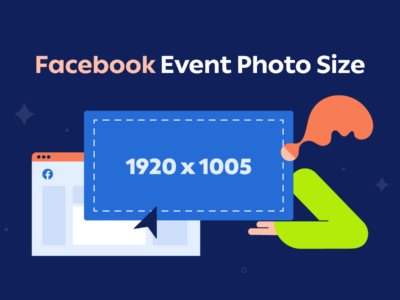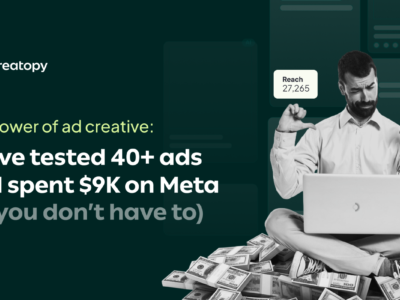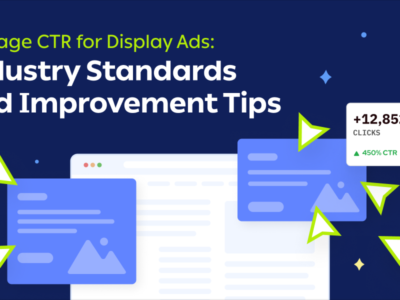Whatever you are selling, the fact is, you need to advertise it.
Whether you are a small business, a prestigious brand, or a mainstream celebrity, people need to hear about what you have to offer. You can never rely on a good name or an aesthetically pleasing social media feed alone.
Just take a few moments and try to think of any brand or celebrity that sold a ton of their products AND turned a profit WITHOUT advertising them in any way, shape, or form.
Can’t think of one? You’re not alone.
Because you need to create shoppable ads. It’s what makes the difference between your business doing okay-ish and exceeding expectations.
In this guide, we will dive deeper into the world of product marketing. We will go over its key benefits and types using some product advertising examples. By the end, you will have a clear idea of what sort of product advertising options are out there and which ones suit your business best.
Table of Contents
1. What is product advertising?
2. What Are the Benefits of Product Advertising?
3. What Are the Main Types of Product Advertising?
4. In Which Ways Can You Use Product Advertising?
5. How to Choose the Right Product Advertising Type?
6. Examples of Product Advertising
7. Conclusion

1. What Is Product Advertising?
Product advertising is a marketing strategy that aims to promote and sell a specific product through various channels. These channels can be traditional mediums such as television, radio, and print, or digital platforms such as social media, display advertising, video, text message (sent through SMS messaging API or software), and email.
The ultimate goal of product advertising is to encourage consumers to make a purchase, by highlighting the benefits and unique features of the product, and differentiating it from competitors.
2. What Are the Benefits of Product Advertising?
Introduces/promotes your product to the market
Whether you’re an established brand or a small business coming out with your first product, people need to know what you’re bringing to the table. You want to convince them that through your product, your brand is the real deal.
Product advertising allows you to step onto the stage confidently and tell everyone: “Hey guys, I have this really cool thing for you.” One way to start product advertising is by making a virtual business card and sharing it with everyone you meet at the product launch event.
Informs customers about its benefits
Your product may have an endless list of benefits, but few people have the time or patience to sit down and read the list. Product advertising delivers the best pieces of information in quick, bite-sized chunks—enough to grab your customer’s attention without boring them.
Distinguishes you from your competitors
Does your product have better ingredients or higher quality components than your competitor’s? A cleaner design? A better price?
Product marketing helps you make that clear.
Keep in mind that it’s never a good idea to name your competitors in your advertisements for several reasons:
- To keep customers’ focus on your product alone;
- To avoid lawsuits and other uncomfortable situations with other brands;
- To show confidence in your product.
A good product advertisement will communicate everything that makes your product unique without having to name another.
Targets specific customers
Product advertising is your chance to reach out to not just any audience, but your target audience.
Since product advertisements generally need to be quick and direct, you need to address your audience’s main pain points straight away. You need to laser-focus on what their needs are and how you can help them.
To make sure you are able to connect with your audience, it’s important to create a clear buyer persona in your marketing plan before you start thinking about advertisements. Having a clear picture of who you want to talk to will allow you to communicate with them much more easily. Aligning your product development steps with the insights gained from creating buyer personas ensures that your offerings directly address the needs and preferences of your target audience.
Establishes a better connection between your customers and the company
Good communication leads to a good relationship.
Product advertising is one of the many digital tools you can use to establish direct contact between you and your target audience. By effectively conveying the benefits and unique features of your product through advertisements, you can create a sense of trust and understanding with your customers. Monitoring the KPI for product development can provide valuable insights into the effectiveness and efficiency of your marketing efforts. This connection enhances customer satisfaction and increases their likelihood of repeat purchases and loyalty to your brand.
Reinforces brand image
“Maybe she’s born with it. Maybe it’s __.”
If your mind automatically filled in the blank without me having to drop any hints about the brand name, then it means Maybelline did a good job at reinforcing its brand image in the advertisements.
And you can do that too.
Even something as simple as including your slogan or using your brand colors can help make people remember your brand.
Reduces misconceptions
We’ve established previously that a good product advertisement allows you to effectively and directly communicate with your target audience.
The cool thing about this communication is that it not only addresses your customer’s needs but it also reduces other people’s misconceptions about your product.
A good advertisement allows you to tackle questions or concerns head-on, without having to spend too much time on them.
3. What Are the Main Types of Product Advertising?
In the realm of marketing, many advertising strategies can be used to promote products. Some strategies focus specifically on products, while others can be used for services or broader brand messaging. Let’s look at which of these types are most closely aligned with product advertising specifically and how they apply:
Comparative Product Advertising
- Comparative advertising helps by allowing you to highlight how your brand stands out compared to others. This strategy enables you to showcase the superior quality and features of your product or service. By drawing comparisons, you effectively demonstrate to your target market why your brand is a better choice without necessarily making direct product-to-product comparisons.
Competitive Product Advertising
- When aiming to succeed in a crowded market, competitive advertising is crucial. This strategy highlights your brand’s unique strengths and advantages, allowing it to stand out from the competition. In contrast to comparative advertising, which directly compares products, competitive advertising focuses on showcasing what makes your brand superior. This helps to reinforce your market position and attract more customers.
Pioneering advertising
- This strategy focuses on building awareness and understanding, highlighting the unique benefits and features of the new offering. By doing so, pioneering advertising helps establish a strong market presence and sets the stage for future growth. This method is primarily used in the initial phase of the product life cycle.
Reminder advertising
- Reminder advertising is a marketing strategy used to keep a brand or product in the minds of consumers. It is typically employed for products that have reached maturity in their life cycle and are already well-known in the market. The main goal of reminder advertising is to maintain customer awareness and encourage repeat purchases. This type of advertising is crucial in saturated markets, where continual visibility is essential to fend off competition and ensure brand loyalty. Effective reminder ads are often simple, focusing on reinforcing the brand image and nudging consumers toward making another purchase.
Reinforcement Advertising
- Reinforcement advertising is designed to boost the confidence of current customers in their past purchase decisions, ensuring that they feel good about their choices. Unlike reminder advertising, which mainly aims to keep the brand and product at the forefront of customers’ minds for future purchases, reinforcement advertising works to enhance customer loyalty by confirming the benefits and satisfaction gained from the product, promoting continued use, and strengthening the emotional bond with the brand.
4. In Which Ways Can You Use Product Advertising?
Product advertising is a dynamic field that offers several effective ways for businesses to promote their offerings. Choosing the right advertising approach is crucial, as each category comes with its own set of benefits and challenges. It is important to select the methods that best align with your product, brand identity, and target audience. Here’s a closer look at the four main ways of product advertising:
Television & Radio
Television and radio offer traditional ways to reach broad audiences through:
- Commercials
- Infomercials
- Audio ads (radio ads)
The historical significance of TV and radio in the advertising world is profound. With the advent of radio in the 1920s, entities like the West of England Aerospace Forum (WEAF) realized its potential for mass communication. This led to the selling of broadcast time to businesses, a practice that television would adopt two decades later. The first TV commercial aired in 1941 on NBC for Bulova, an American watch manufacturer, featuring a visual of a watch superimposed on the USA map accompanied by the slogan: “America runs on Bulova time.”
While online platforms have recently overshadowed TV and radio, these mediums are far from obsolete. Many people still incorporate watching TV and listening to the radio into their daily routines, making these channels viable for certain marketing strategies.
Print offers another traditional way to connect with audiences, including:
- Posters
- Flyers
- Newspaper/magazine ads
As the oldest form of advertising, its inception dates back to when the printing press was first introduced. William Caxton, who brought the printing press to England around 1476, is credited with creating the first printed advertisement. Today, print ads have evolved into more complex and visually appealing designs, but they remain a staple in marketing strategies, especially for local businesses and events.

Out-of-Home
Out-of-home (OOH) advertising encompasses all the advertisements that we see outside of our homes, offering creative ways to catch people’s attention:
- Static billboards
- Interactive digital billboards
- Bus ads
- Wallscapes
- Guerilla advertising
OOH advertising allows for creativity beyond the typical advertising box. A prime example of OOH’s potential is New York City’s Times Square, which sees hundreds of thousands of pedestrians daily, making it an ideal spot for high-impact advertising campaigns.
Online
Over time, online advertising has become more sophisticated, more targeted, and undoubtedly more creative. The digital boom of the 1990s introduced numerous new ways to advertise. Digital marketing is now a crucial tool for identifying your audience and reaching consumers likely to purchase your products.
- Display ads
- Display ads are the clickable banner, square, or rectangle ads found on websites within networks like Google’s Display Network. These ads redirect users to the advertiser’s website, facilitating direct engagement and traffic.
- Social media ads
- Social media ads appear on platforms such as Facebook, Instagram, TikTok, LinkedIn, and Twitter. They vary from static and animated images to video content, tailored to catch the eye of users as they scroll through their feeds.
- Video ads
- Video ads are dynamic content found primarily on streaming sites and can appear before, during, or after videos. Increasingly, these are also prevalent on social media, engaging users with compelling visual and audio content.
- Email ads
- Email advertising includes promotional messages delivered directly to a user’s inbox. This can be in the form of newsletters that users have subscribed to or targeted sponsored ads selected by email services, offering a direct line of communication with potential customers.
The first-ever online banner ad appeared on HotWired in 1994, marking the beginning of what would become a highly sophisticated and targeted approach to digital marketing. Today, online advertising is tailored to reach specific demographics, making it a crucial tool for modern marketers.

5. How to Choose the Right Product Advertising Type?
- It’s important not to spread your advertising efforts too thin by trying to reach everyone. Instead, focus on using the most effective advertising types based on strategic considerations.
- Before deciding how to advertise your product, consider your niche and ask yourself two key questions: “Where is my target audience located?” and “Which type of advertisement makes the most sense for my product?” For example, Spotify doesn’t advertise on radio stations because they target users who already use their free app, not radio listeners. This decision is based on understanding where their potential customers are most engaged and likely to convert.
- To apply this to your strategy, conduct market research or analyze customer data to understand where your audience spends their time and how they prefer to receive information. For example, a beauty product performs exceptionally well on visual platforms like Instagram or YouTube, whereas software products benefit more from detailed reviews and testimonials on tech blogs.
- Finally, always consider the return on investment (ROI) when selecting advertising channels. Focusing your resources on the mediums that resonate best with your target audience will yield more significant benefits than a scattershot approach across too many platforms.
6. Examples of Product Advertising
Display

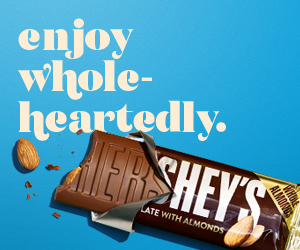
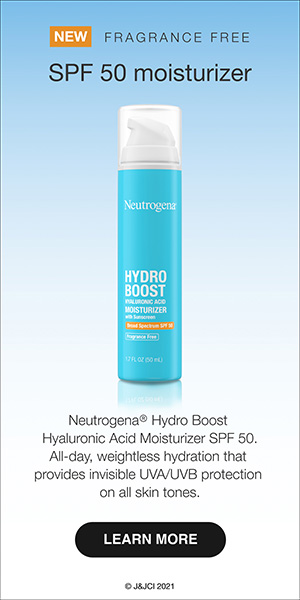
Social media
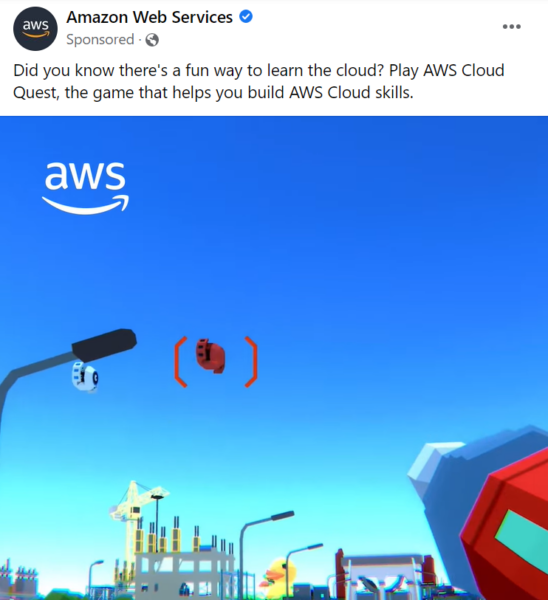

Video


Here are some other product advertising examples that take advantage of video’s great potential.
Newsletter:

Sponsored email ads:

7. Conclusion
There is no product without its advertising. If your brand releases something that will change the world, people need to hear about it first.
Although the product advertising landscape has changed and will continue to change, it’s clear that it will always be an essential tool to sell well.
What type of product advertising will you be using?


